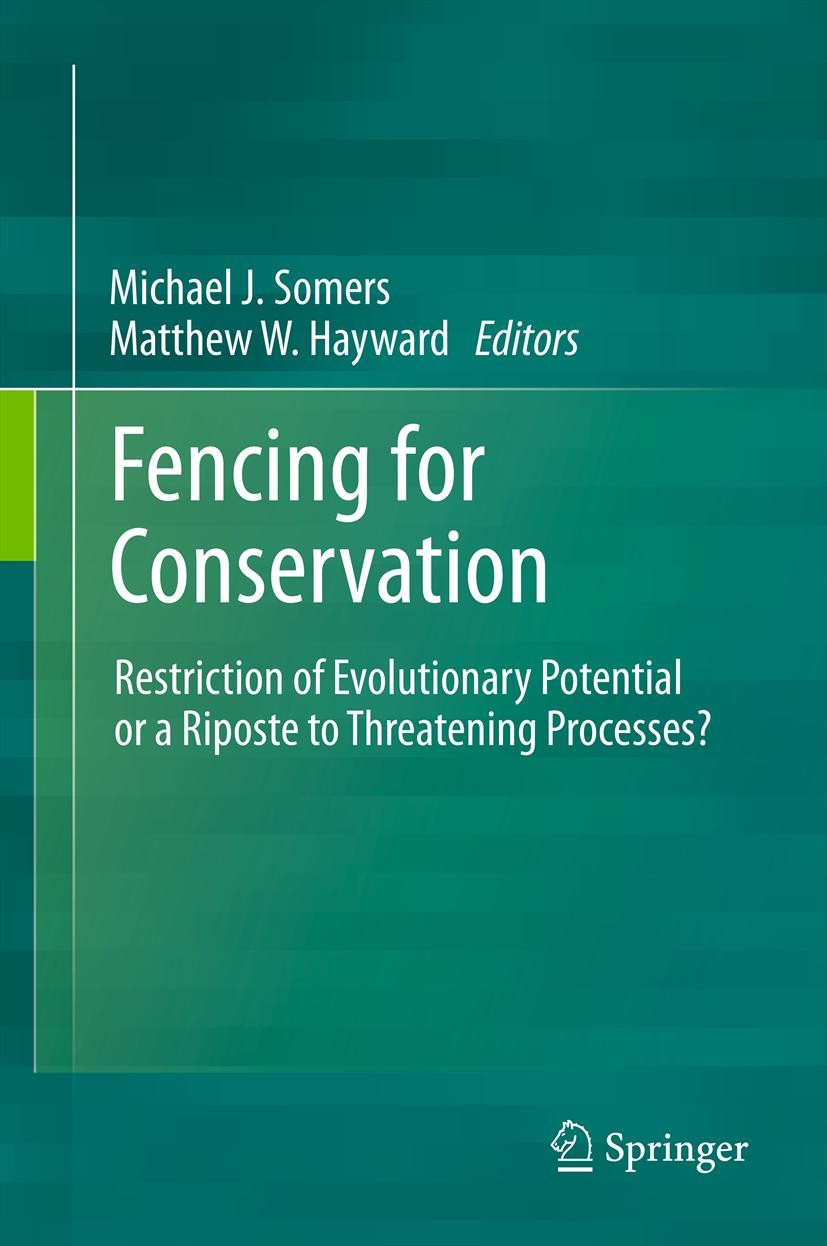| 书目名称 | Fencing for Conservation | | 副标题 | Restriction of Evolu | | 编辑 | Michael J. Somers,Matthew Hayward | | 视频video | http://file.papertrans.cn/342/341989/341989.mp4 | | 概述 | An evaluation of the positives and negatives of fencing in conservation and wildlife management.Includes case studies from around the world.This book will look at the positives and negatives of fencin | | 图书封面 |  | | 描述 | The conflict between increasing human population and biodiversity conservation is one of the IUCN’s key threatening processes.Conservation planning has received a great deal of coverage and research as a way of conserving biodiversity yet, while theoretically successful, it has never been tested.Simple lines on maps to illustrate conservation areas are unlikely to be successful in the light of human encroachment.It may be that some form of overt display is necessary to ensure the protection of reserves.This may be signage, presence of guards/rangers or physical fencing structures.The need for some form of barrier goes beyond restricting human access.The megafauna of Africa pose a genuine threat to human survival.In southern Africa, fences keep animals in and protect the abutting human population.Elsewhere, fencing is not considered important or viable.Where poverty is rife, it won’t take much to tip the balance from beneficial conservation areas to troublesome repositories of crop-raiders, diseases and killers.Conversely, in New Zealand fences are used to keep animals out.Introduced species have decimated New Zealand’s endemic birds, reptiles and invertebrates, and several sites ha | | 出版日期 | Book 2012 | | 版次 | 1 | | doi | https://doi.org/10.1007/978-1-4614-0902-1 | | isbn_softcover | 978-1-4899-9900-9 | | isbn_ebook | 978-1-4614-0902-1 | | copyright | Springer Science+Business Media, LLC. 2012 |
The information of publication is updating

|
|
 |Archiver|手机版|小黑屋|
派博传思国际
( 京公网安备110108008328)
GMT+8, 2025-11-11 13:37
|Archiver|手机版|小黑屋|
派博传思国际
( 京公网安备110108008328)
GMT+8, 2025-11-11 13:37


